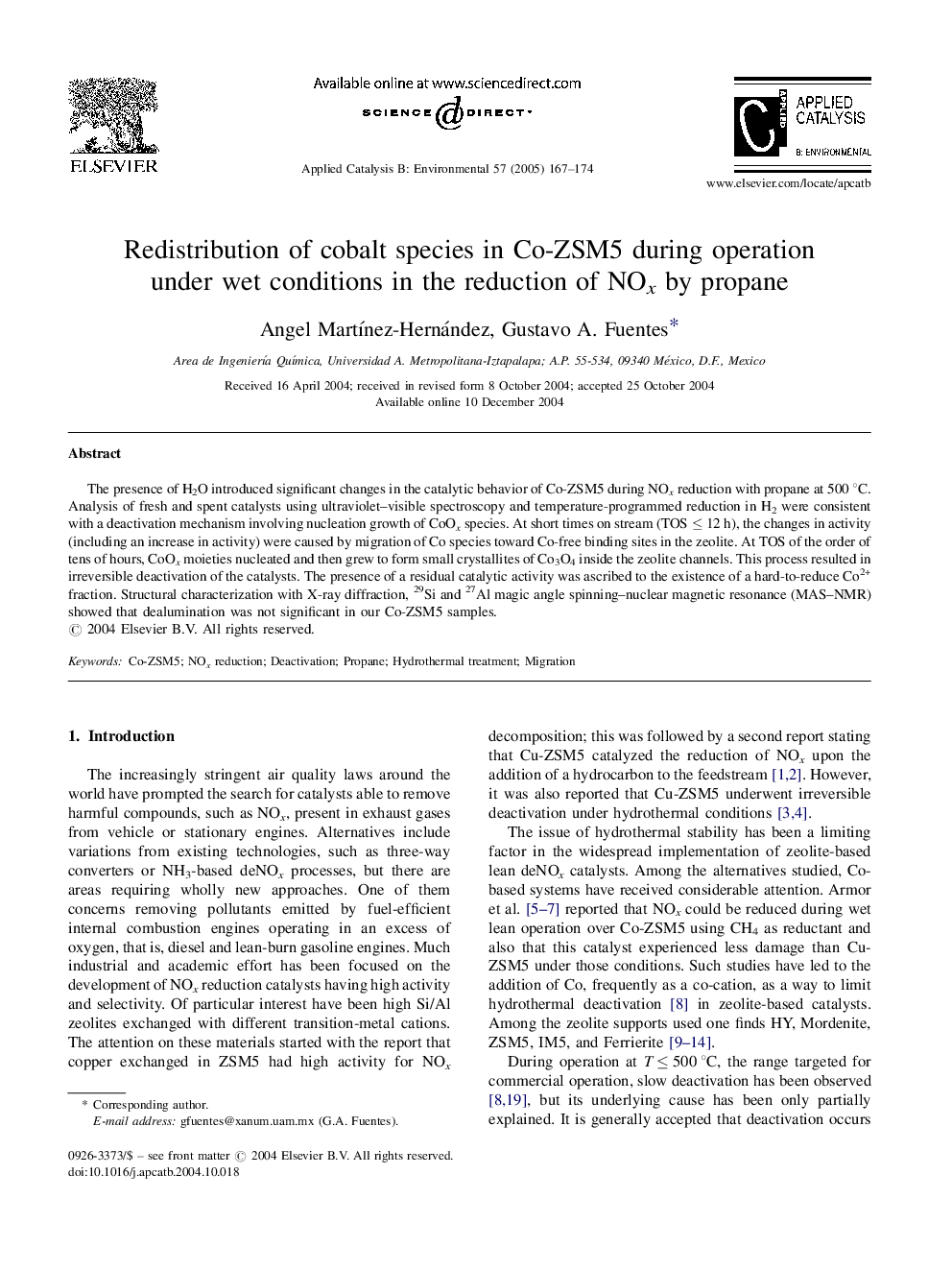| Article ID | Journal | Published Year | Pages | File Type |
|---|---|---|---|---|
| 10241555 | Applied Catalysis B: Environmental | 2005 | 8 Pages |
Abstract
The presence of H2O introduced significant changes in the catalytic behavior of Co-ZSM5 during NOx reduction with propane at 500 °C. Analysis of fresh and spent catalysts using ultraviolet-visible spectroscopy and temperature-programmed reduction in H2 were consistent with a deactivation mechanism involving nucleation growth of CoOx species. At short times on stream (TOS â¤Â 12 h), the changes in activity (including an increase in activity) were caused by migration of Co species toward Co-free binding sites in the zeolite. At TOS of the order of tens of hours, CoOx moieties nucleated and then grew to form small crystallites of Co3O4 inside the zeolite channels. This process resulted in irreversible deactivation of the catalysts. The presence of a residual catalytic activity was ascribed to the existence of a hard-to-reduce Co2+ fraction. Structural characterization with X-ray diffraction, 29Si and 27Al magic angle spinning-nuclear magnetic resonance (MAS-NMR) showed that dealumination was not significant in our Co-ZSM5 samples.
Related Topics
Physical Sciences and Engineering
Chemical Engineering
Catalysis
Authors
Angel MartÃnez-Hernández, Gustavo A. Fuentes,
